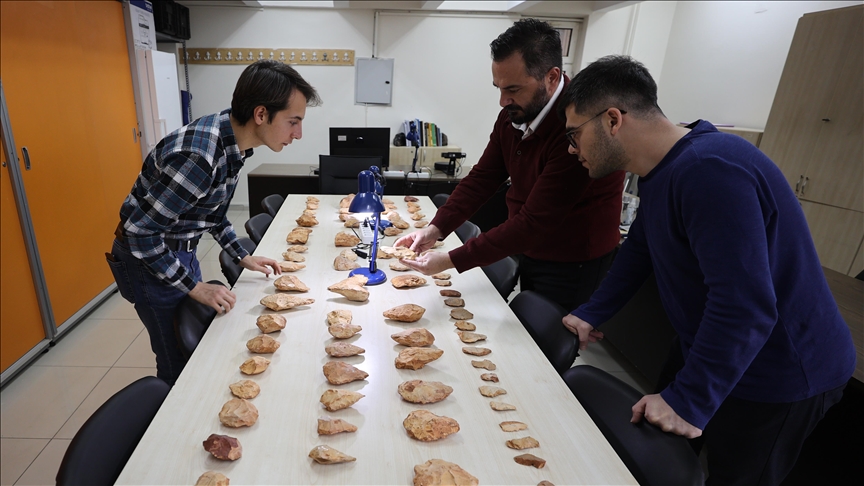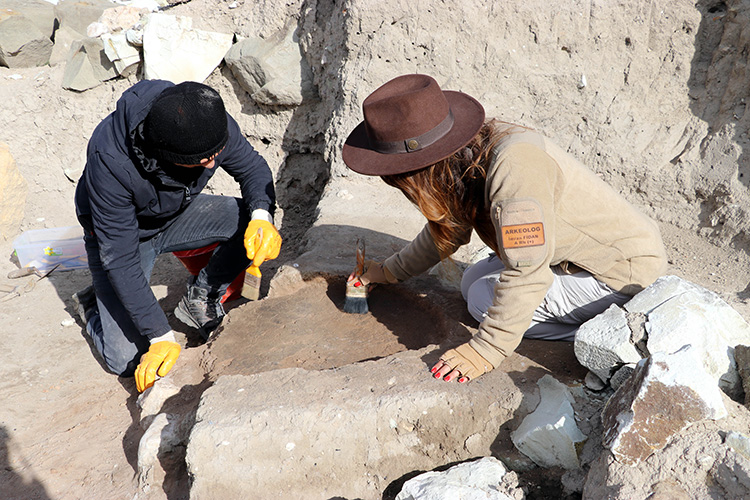About 8,200 artifacts from the Paleolithic era are being prepared for exhibition after surface surveys conducted in the southeastern Gaziantep University campus in Türkiye.
The work initiated by the Gaziantep Museum Directorate at the school is now approaching completion, with the permission of the Ministry of Culture and Tourism that was obtained in 2021.
The chipped stone artifacts used in activities such as hunting during the lower Paleolithic era were found, during studies.
The artifacts classified in collaboration with students in the archaeology department will be exhibited at the Gaziantep Archaeology Museum.
Professor Ismail Baykara, the head of the protohistory department of archaeology at Gaziantep University, told Anadolu that graduate student Yunus Emre Sevindik approached him with a finding from the lower Paleolithic era, and they obtained permission from the Ministry of Culture and Tourism to work on the finding.
Baykara said teams have reached the end of the research started on the university campus and the findings were already known in Gaziantep since similar findings have been reached in many studies.
“Within the university campus, we reached chipped stone remnants from the lower Paleolithic eras in significant quantities.
“Among them, especially hand axes are very characteristic. These hand axes already indicate to us that they could be over 300,000 years old,” he said noting that teams are working to evaluate a clear date as to when the artifacts belong.
Baykara emphasized the importance of the study for students and said students receive practical lessons.
He added that in the studies, they take the coordinates of each stone, classify them and students have the opportunity to work throughout the day.
Gaziantep Museum Director Özgur Çomak noted the coincidental discovery of chipped stone artifacts on the surfaces across from a faculty’s parking lot.
“After completing the inventory of all these artifacts, we will move them to the Archaeology Museum in Gaziantep. Once we transport these artifacts to the Archaeology Museum, we will arrange them for exhibition and presentation, allowing visitors to come and see them,” said Comak.







